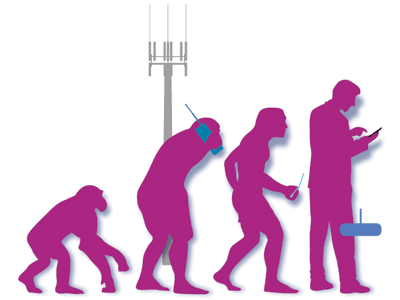The femtocell market is undergoing a period
of radical change and market
participants must keep pace
BY RUPERT BAINES
picoChip, Bath, U.K.
http://www.picochip.com
With recent figures released from the market research firm ABI, the femtocell market’s growth has been under particular scrutiny. No matter what the shape of the curve, however, it is clear that femtocells will live up to the hype and then some, with volumes expected to shoot up next year and beyond.

During 2009 alone, seven operators launched femtocells for consumers — AT&T, Vodafone, SFR, DoCoMo, Softbank, Optimus, and StarHub — and Sprint and Verizon in the U.S. have been offering commercial solutions for far longer. In short, some of the largest operators in the world are now deploying femtocells — transforming femtocells from a great idea to a reality. Despite its recent revision of market figures, ABI continues to forecast that by 2014 volumes will be hitting 40 million units a year.
Technology
The technology behind femtocells is far from trivial: Operators have approached their deployments carefully, ensuring they cover all bases to give consumers confidence in the solution. But long before the deployment stage, companies in the femtocell ecosystem were working on overcoming the substantial technological hurdles involved.
In a domestic or enterprise setting, when a femtocell is switched on, it needs to detect its surroundings — searching for other base stations in the surrounding area — and self-configure to minimize radio interference. It then automatically connects to the core network via the broadband router. As it is linked into the network, security, authentication, and other services must be integrated into the device, adding another layer of complexity. The result is, however, an end-to-end solution essentially offering a personal cell service in the home with perfect mobile voice coverage and high data rates.
The first launches from Sprint and Verizon were relatively simple, with a 2.5G service and the rationale of providing simple voice coverage to improve customer retention. Vodafone and AT&T’s moves are more sophisticated, with HSPA femtocells reducing churn while improving voice and data coverage and capacity.
Femtocells actually include far more intelligence than traditional base stations. Because of this change in the way tasks are partitioned in the network, femtocell chips need to provide enhanced security features for authentication, location detection, encryption, and the prevention of DoS attacks.

A PC3xx picoXcell device integrates all the baseband processing needed for a femtocell, plus many of the requirements defined by the industry’s now established standards.
Challenges
The femtocell market is maturing rapidly. The initial technical challenges — implementing the baseband and protocol stack in an integrated device with low power dissipation — were essentially solved by 2007. The following year was about more subtle issues — such as interference management and security — and, just as important, saw the definition of standards that ensure that any femtocell can integrate with the network. In 2009 we saw productization of the femtocell and initial launches. As a consequence, we are beginning to see the market move into a different phase, becoming a consumer market with a value chain like those in the DSL and Wi-Fi sectors. During 2010 and 2011 we expect to see the operator business cases established, widespread deployments and cost optimization, as volumes dramatically increase. The predicted 40 million units estimated by ABI represents a significant increase in volume from the 350,000 in 2009.
As volume increases, costs will be driven down. The target $20 chipset ASP, of course, requires technical excellence, but ever-increasing functionality will be expected as well. The early pioneering spirit will need to be supplemented with less glamorous but no less important values of operational excellence. The femtocell ecosystem needs to ensure that it offers certified quality, a reliable supply chain and logistical support in short, that it delivers on its promises.
As efficiencies begin to emerge, the market will consolidate and simplify. As example, picoChip offers the PC3xx picoXcell femtocell SoC which incorporates the processing power and accelerators to enable execution of the RNC stack functions. Moreover, it needs the right kind of processing power a blend of signal processing for the physical layer, and control plane and network processing for the stack. To satisfy these needs, for example, the PC302 includes both a PHY processing and an ARM 11 subsystem suitable for running the stack, provisioning, and security.
A complete femtocell offering will eliminate the need for femtocell makers to buy separate software or invent it in-house.
A complete femtocell offering will eliminate the need for femtocell makers to buy-in separate software or invent it in-house increasing flexibility and dramatically reducing time to market. It will also empower femtocell makers to build in additional features, applications, and complexity.
The femtocell market is undergoing radical change, and market participants must keep pace. An inevitable consolidation of the market will take place as volumes ramp up, as it has done in the past with Wi-Fi and DSL. It is crucial that the market is prepared for these changes, so everyone in the value chain benefits. ■
For more on wireless, visit http://www2.electronicproducts.com/AnalogMixICs.aspx.
Advertisement
Learn more about picoChip





